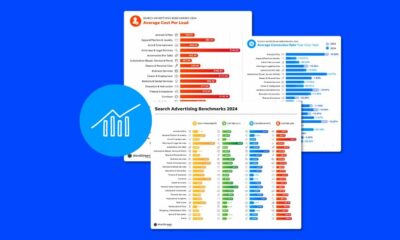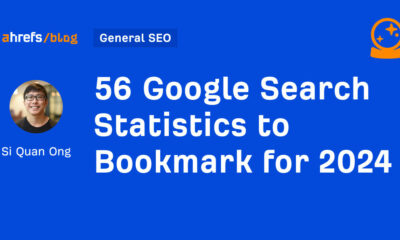MARKETING
Must-Have Checklist to Creating Valuable Content
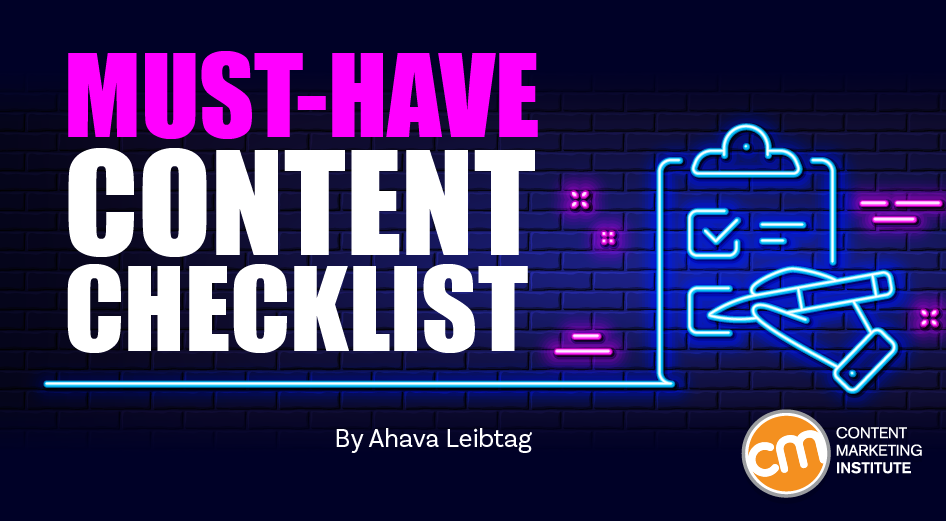
A great content strategy takes the guesswork out of execution so creative content can flourish. But you need to get the details right. This five-step checklist for creating valuable content can help you do that.
Use the checklist to ensure your content reaches and helps the right audience and to keep your team focused on your strategy’s goals. (It also may give you a feeling of accomplishment –who doesn’t love checking completed tasks off a list?)
Use this content checklist to ensure your #content reaches the right audience and your team stays focused on the right goals, says @ahaval via @CMIContent. Click To Tweet
What makes content valuable?
Everybody wants their content to sparkle. But there’s more to valuable content than perfectly polished sentences. Let’s dive into the characteristics all valuable content shares.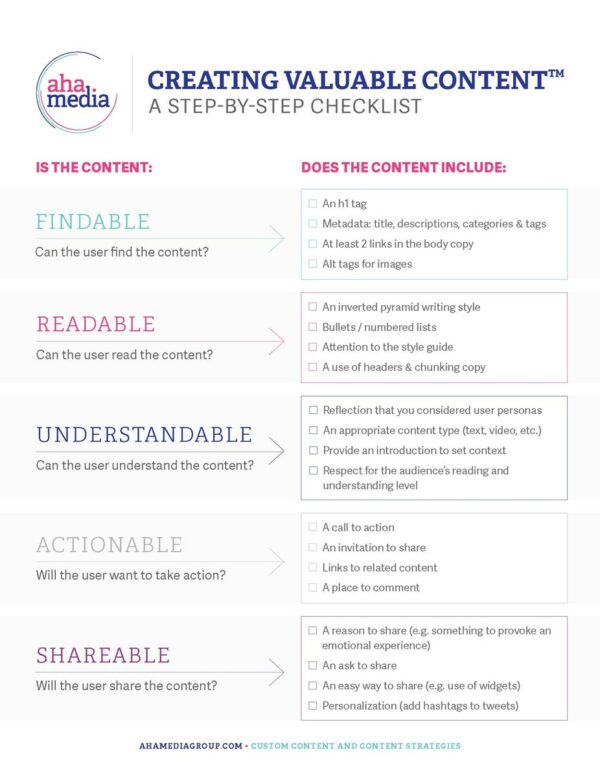 The checklist defines valuable content using five benchmarks:
The checklist defines valuable content using five benchmarks:
- Findable
- Readable
- Understandable
- Actionable
- Shareable
(Hat tip to Colleen Jones, founder and principal at Content Science, who inspired some of these benchmarks.)
Valuable #content must be findable, readable, understandable, actionable, and shareable, says @ahaval via @CMIContent. Click To Tweet
1. Findable content
People need a way to discover your content. Make sure you follow SEO guidelines to create findable content.
TIP: Before creating findable content, perform keyword research based on your goals and user research.
Use one H1 and multiple H2 tags on each page [web content]
Headlines and sub-headlines help search engine rankings and create visual breaks in the text. Highlight them in the original text (or whatever system you use to move content from creation into production) so the team posting the content understands how to code it.
TIP: You can use H3 tags if the content necessitates it, but they won’t give the same bang for your SEO buck as H1 and H2 tags do.
Customize the metadata
These are your title, keywords, and description tag. Make sure the metadata describes the content on the page according to your keyword research.
Include links to other pages on the site
Links increase the value assigned by search engine spiders to your pages. Spiders are the robots that crawl through your site to find relevant content.
Include alt tags on your photos and other images
Alt tags ensure the images appear in image searches. Describe the picture in the image (because alt tags were first designed for the visually impaired) and use these tags to highlight your content.
For instance, if the image is doctors performing surgery, the alt tag could be, “The doctors at Sweet Valley Hospital in Sweet Valley, Calif., are experts in separating identical twins in a surgery known as identical separation, as shown in this photo.”
Post videos on YouTube or Facebook
Publishing your videos on social channels increases the likelihood they will be seen. I like YouTube because it gives accurate view counts. Tag the content on whichever platform so users can find it:
- Include keywords in your title
- Provide a detailed, keyword-rich summary
Distribute in different formats
Package audio content in multiple formats – MP3, WAV, and WIFF, so it’s available to different audiences. You don’t want a potential customer thwarted from listening to your content because they can’t use the available format.
Create a detailed summary and title for audio files
This information lives where the content can be downloaded. For some delivery vehicles, that’s the system where it’s stored, such as iTunes. For others, it might be the page where you post the file.
House each audio clip on a relevant content page
By creating a page for each audio asset, the text and sound work together to boost SEO efforts by demonstrating relevant content to the search engines.
2. Readable content
Once people find your content, is it readable?
Remember, readers scan until they find the content they need. Respect the person’s time. Consider using:
- Inverted pyramid style: Put the most important facts at the top and the least important at the bottom. The image above was produced using eye-tracking software. You can see where the user’s eyes scanned on the page: See how that shape follows an inverted pyramid.
- Chunking: Keep paragraphs short. Follow the rule of three: No more than three sentences in a paragraph. No more than three paragraphs under one heading.
- Bullets and numbered lists: When people want to consume information quickly, lists and bullets are helpful.
- Consistent language: Avoid confusing your readers. For example, how do you refer to your business, company, or institution? Switching between your organization’s name and “us” can confuse your audience. Use a style guide to help everyone get on the same page.
3. Understandable content
Creating content that users understand can be challenging with complex topics. My agency does a lot of health-care content creation. Many times, we write on an eighth-grade reading level. Even that might be too elevated for some readers.
How can you create understandable content no matter your industry?
- Choose the right content type: For example, if users have an aha moment seeing something sketched, use a video or slideshow instead of text.
- Create personas for your audiences: Match the level of the content’s complexity to the user’s ability to understand it.
- Provide context: Briefly explain even the most basic concepts to your users. You never know where someone will jump into the conversation.
- Apply a standard reading level for each project: And stick to it. Base this on your users’ personas and market research. Microsoft Word has a function for testing reading levels — experiment with that scoring.
- Provide valuable information: This could be new information or a new way of articulating an existing idea. Sometimes metaphors help people understand better.
Always provide context to your audience. You never know where someone jumps into the conversation, says @ahaval via @CMIContent. Click To Tweet
4. Actionable content
You create content because you want readers to act. How can you make sure that happens?
- CTA: Include an obvious call to action.
- Easy to use: Make it easy for users to comment and ask questions publicly and privately. Allow blog comments or direct people to your company’s Facebook page. If you accept comments through your contact us page, make it easy to find and use.
- Provide links: Include links to relevant content or program your content management system (CMS) to suggest related content options automatically.
- Actionable items first: Include a list of actionable items for the user at the top of lengthy content. For example, a long-form article on diabetes care could include three bullets at the top defining diabetes and explaining how to control it.
5. Shareable content
People trust peers more than brands. How can you get users to share your content with their friends? Consider some of these ideas:
- Get emotional: Provoke an emotional response with your readers. When I first started writing articles on content marketing, one of my editors told me, “People are more likely to share controversial content.” Just be careful not to go too far over the line.
- Provide a reason to share: For example, tell a story about how sharing health information helped one family increase its exercise efforts.
- Make sharing easy: Work with your IT staff to decide which sharing widget is best for your organization.
- Personalize it: Allow users to personalize the share. For instance, when Aha Media Group retweets things, we add hashtags and reference other sources.
To get the most out of the checklist, invite decision-makers in
Before you use the checklist, you need buy-in. Start with the executives at your company who can effect changes in your resources, influence your company’s social media policy, and become champions for your brand’s voice.
Explaining the one-page checklist gives them insight into the content creation process. It also opens the door for dialogue about your team’s challenges and the potential solutions, so together, you can bring the brand’s content to greatness.
Do you have experience using checklists in your content marketing? I’d love to see your examples. Or let me know what you would change in this checklist.
Updated from a June 2019 post.
HANDPICKED RELATED CONTENT:
Cover image by Joseph Kalinowski/Content Marketing Institute
MARKETING
18 Events and Conferences for Black Entrepreneurs in 2024

Welcome to Breaking the Blueprint — a blog series that dives into the unique business challenges and opportunities of underrepresented business owners and entrepreneurs. Learn how they’ve grown or scaled their businesses, explored entrepreneurial ventures within their companies, or created side hustles, and how their stories can inspire and inform your own success.
It can feel isolating if you’re the only one in the room who looks like you.
MARKETING
IAB Podcast Upfront highlights rebounding audiences and increased innovation
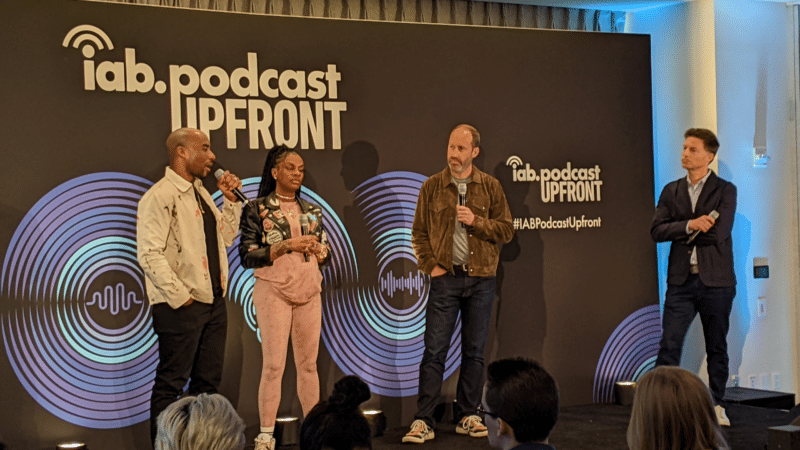
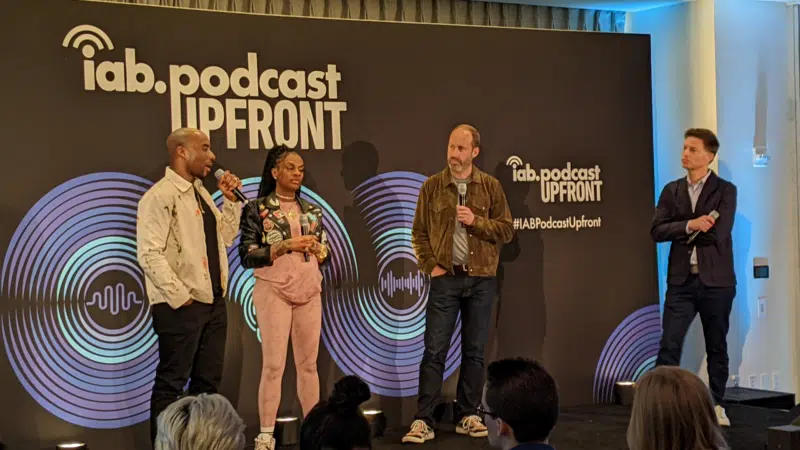
Podcasts are bouncing back from last year’s slowdown with digital audio publishers, tech partners and brands innovating to build deep relationships with listeners.
At the IAB Podcast Upfront in New York this week, hit shows and successful brand placements were lauded. In addition to the excitement generated by stars like Jon Stewart and Charlamagne tha God, the numbers gauging the industry also showed promise.
U.S. podcast revenue is expected to grow 12% to reach $2 billion — up from 5% growth last year — according to a new IAB/PwC study. Podcasts are projected to reach $2.6 billion by 2026.
The growth is fueled by engaging content and the ability to measure its impact. Adtech is stepping in to measure, prove return on spend and manage brand safety in gripping, sometimes contentious, environments.
“As audio continues to evolve and gain traction, you can expect to hear new innovations around data, measurement, attribution and, crucially, about the ability to assess podcasting’s contribution to KPIs in comparison to other channels in the media mix,” said IAB CEO David Cohen, in his opening remarks.
Comedy and sports leading the way
Podcasting’s slowed growth in 2023 was indicative of lower ad budgets overall as advertisers braced for economic headwinds, according to Matt Shapo, director, Media Center for IAB, in his keynote. The drought is largely over. Data from media analytics firm Guideline found podcast gross media spend up 21.7% in Q1 2024 over Q1 2023. Monthly U.S. podcast listeners now number 135 million, averaging 8.3 podcast episodes per week, according to Edison Research.
Comedy overtook sports and news to become the top podcast category, according to the new IAB report, “U.S. Podcast Advertising Revenue Study: 2023 Revenue & 2024-2026 Growth Projects.” Comedy podcasts gained nearly 300 new advertisers in Q4 2023.
Sports defended second place among popular genres in the report. Announcements from the stage largely followed these preferences.
Jon Stewart, who recently returned to “The Daily Show” to host Mondays, announced a new podcast, “The Weekly Show with Jon Stewart,” via video message at the Upfront. The podcast will start next month and is part of Paramount Audio’s roster, which has a strong sports lineup thanks to its association with CBS Sports.
Reaching underserved groups and tastes
IHeartMedia toasted its partnership with radio and TV host Charlamagne tha God. Charlamagne’s The Black Effect is the largest podcast network in the U.S. for and by black creators. Comedian Jess Hilarious spoke about becoming the newest co-host of the long-running “The Breakfast Club” earlier this year, and doing it while pregnant.
The company also announced a new partnership with Hello Sunshine, a media company founded by Oscar-winner Reese Witherspoon. One resulting podcast, “The Bright Side,” is hosted by journalists Danielle Robay and Simone Boyce. The inspiration for the show was to tell positive stories as a counterweight to negativity in the culture.
With such a large population listening to podcasts, advertisers can now benefit from reaching specific groups catered to by fine-tuned creators and topics. As the top U.S. audio network, iHeartMedia touted its reach of 276 million broadcast listeners.
Connecting advertisers with the right audience
Through its acquisition of technology, including audio adtech company Triton Digital in 2021, as well as data partnerships, iHeartMedia claims a targetable audience of 34 million podcast listeners through its podcast network, and a broader audio audience of 226 million for advertisers, using first- and third-party data.
“A more diverse audience is tuning in, creating more opportunities for more genres to reach consumers — from true crime to business to history to science and culture, there is content for everyone,” Cohen said.
The IAB study found that the top individual advertiser categories in 2023 were Arts, Entertainment and Media (14%), Financial Services (13%), CPG (12%) and Retail (11%). The largest segment of advertisers was Other (27%), which means many podcast advertisers have distinct products and services and are looking to connect with similarly personalized content.
Acast, the top global podcast network, founded in Stockholm a decade ago, boasts 125,000 shows and 400 million monthly listeners. The company acquired podcast database Podchaser in 2022 to gain insights on 4.5 million podcasts (at the time) with over 1.7 billion data points.
Measurement and brand safety
Technology is catching up to the sheer volume of content in the digital audio space. Measurement company Adelaide developed its standard unit of attention, the AU, to predict how effective ad placements will be in an “apples to apples” way across channels. This method is used by The Coca-Cola Company, NBA and AB InBev, among other big advertisers.
In a study with National Public Media, which includes NPR radio and popular podcasts like the “Tiny Desk” concert series, Adelaide found that NPR, on average, scored 10% higher than Adelaide’s Podcast AU Benchmarks, correlating to full-funnel outcomes. NPR listeners weren’t just clicking through to advertisers’ sites, they were considering making a purchase.
Advertisers can also get deep insights on ad effectiveness through Wondery’s premium podcasts — the company was acquired by Amazon in 2020. Ads on its podcasts can now be managed through the Amazon DSP, and measurement of purchases resulting from ads will soon be available.
The podcast landscape is growing rapidly, and advertisers are understandably concerned about involving their brands with potentially controversial content. AI company Seekr develops large language models (LLMs) to analyze online content, including the context around what’s being said on a podcast. It offers a civility rating that determines if a podcast mentioning “shootings,” for instance, is speaking responsibly and civilly about the topic. In doing so, Seekr adds a layer of confidence for advertisers who would otherwise pass over an opportunity to reach an engaged audience on a topic that means a lot to them. Seekr recently partnered with ad agency Oxford Road to bring more confidence to clients.
“When we move beyond the top 100 podcasts, it becomes infinitely more challenging for these long tails of podcasts to be discovered and monetized,” said Pat LaCroix, EVP, strategic partnerships at Seekr. “Media has a trust problem. We’re living in a time of content fragmentation, political polarization and misinformation. This is all leading to a complex and challenging environment for brands to navigate, especially in a channel where brand safety tools have been in the infancy stage.”
Dig deeper: 10 top marketing podcasts for 2024
MARKETING
Foundations of Agency Success: Simplifying Operations for Growth


Why do we read books like Traction, Scaling Up, and the E-Myth and still struggle with implementing systems, defining processes, and training people in our agency?
Those are incredibly comprehensive methodologies. And yet digital agencies still suffer from feast or famine months, inconsistent results and timelines on projects, quality control, revisions, and much more. It’s not because they aren’t excellent at what they do. I
t’s not because there isn’t value in their service. It’s often because they haven’t defined the three most important elements of delivery: the how, the when, and the why.
Complicating our operations early on can lead to a ton of failure in implementing them. Business owners overcomplicate their own processes, hesitate to write things down, and then there’s a ton of operational drag in the company.
Couple that with split attention and paper-thin resources and you have yourself an agency that spends most of its time putting out fires, reacting to problems with clients, and generally building a culture of “the Founder/Creative Director/Leader will fix it” mentality.
Before we chat through how truly simple this can all be, let’s first go back to the beginning.
When we start our companies, we’re told to hustle. And hustle hard. We’re coached that it takes a ton of effort to create momentum, close deals, hire people, and manage projects. And that is all true. There is a ton of work that goes into getting a business up and running.


The challenge is that we all adopt this habit of burning the candle at both ends and the middle all for the sake of growing the business. And we bring that habit into the next stage of growth when our business needs… you guessed it… exactly the opposite.
In Mike Michalowitz’s book, Profit First he opens by insisting the reader understand and accept a fundamental truth: our business is a cash-eating monster. The truth is, our business is also a time-eating monster. And it’s only when we realize that as long as we keep feeding it our time and our resources, it’ll gobble everything up leaving you with nothing in your pocket and a ton of confusion around why you can’t grow.
Truth is, financial problems are easy compared to operational problems. Money is everywhere. You can go get a loan or go create more revenue by providing value easily. What’s harder is taking that money and creating systems that produce profitably. Next level is taking that money, creating profit and time freedom.
In my bestselling book, The Sabbatical Method, I teach owners how to fundamentally peel back the time they spend in their company, doing everything, and how it can save owners a lot of money, time, and headaches by professionalizing their operations.
The tough part about being a digital agency owner is that you likely started your business because you were great at something. Building websites, creating Search Engine Optimization strategies, or running paid media campaigns. And then you ended up running a company. Those are two very different things.


How to Get Out of Your Own Way and Create Some Simple Structure for Your Agency…
- Start Working Less
I know this sounds really brash and counterintuitive, but I’ve seen it work wonders for clients and colleagues alike. I often say you can’t see the label from inside the bottle and I’ve found no truer statement when it comes to things like planning, vision, direction, and operations creation.
Owners who stay in the weeds of their business while trying to build the structure are like hunters in the jungle hacking through the brush with a machete, getting nowhere with really sore arms. Instead, define your work day, create those boundaries of involvement, stop working weekends, nights and jumping over people’s heads to solve problems.
It’ll help you get another vantage point on your company and your team can build some autonomy in the meantime.
- Master the Art of Knowledge Transfer
There are two ways to impart knowledge on others: apprenticeship and writing something down. Apprenticeship began as a lifelong relationship and often knowledge was only retained by ONE person who would carry on your method.
Writing things down used to be limited (before the printing press) to whoever held the pages.
We’re fortunate that today, we have many ways of imparting knowledge to our team. And creating this habit early on can save a business from being dependent on any one person who has a bunch of “how” and “when” up in their noggin.
While you’re taking some time to get out of the day-to-day, start writing things down and recording your screen (use a tool like loom.com) while you’re answering questions.


Deposit those teachings into a company knowledge base, a central location for company resources. Some of the most scaleable and sellable companies I’ve ever worked with had this habit down pat.
- Define Your Processes
Lean in. No fancy tool or software is going to save your company. Every team I’ve ever worked with who came to me with a half-built project management tool suffered immensely from not first defining their process. This isn’t easy to do, but it can be simple.
The thing that hangs up most teams to dry is simply making decisions. If you can decide how you do something, when you do it and why it’s happening that way, you’ve already won. I know exactly what you’re thinking: our process changes all the time, per client, per engagement, etc. That’s fine.
Small businesses should be finding better, more efficient ways to do things all the time. Developing your processes and creating a maintenance effort to keep them accurate and updated is going to be a liferaft in choppy seas. You’ll be able to cling to it when the agency gets busy.
“I’m so busy, how can I possibly work less and make time for this?”


You can’t afford not to do this work. Burning the candle at both ends and the middle will catch up eventually and in some form or another. Whether it’s burnout, clients churning out of the company, a team member leaving, some huge, unexpected tax bill.
I’ve heard all the stories and they all suck. It’s easier than ever to start a business and it’s harder than ever to keep one. This work might not be sexy, but it gives us the freedom we craved when we began our companies.
Start small and simple and watch your company become more predictable and your team more efficient.
-

 PPC6 days ago
PPC6 days agoHow the TikTok Algorithm Works in 2024 (+9 Ways to Go Viral)
-

 SEO5 days ago
SEO5 days agoHow to Use Keywords for SEO: The Complete Beginner’s Guide
-

 SEO7 days ago
SEO7 days agoBlog Post Checklist: Check All Prior to Hitting “Publish”
-

 MARKETING6 days ago
MARKETING6 days agoHow To Protect Your People and Brand
-

 SEARCHENGINES7 days ago
SEARCHENGINES7 days agoGoogle Started Enforcing The Site Reputation Abuse Policy
-

 MARKETING7 days ago
MARKETING7 days agoElevating Women in SEO for a More Inclusive Industry
-

 PPC7 days ago
PPC7 days agoHow to Brainstorm Business Ideas: 9 Fool-Proof Approaches
-

 MARKETING5 days ago
MARKETING5 days agoThe Ultimate Guide to Email Marketing














